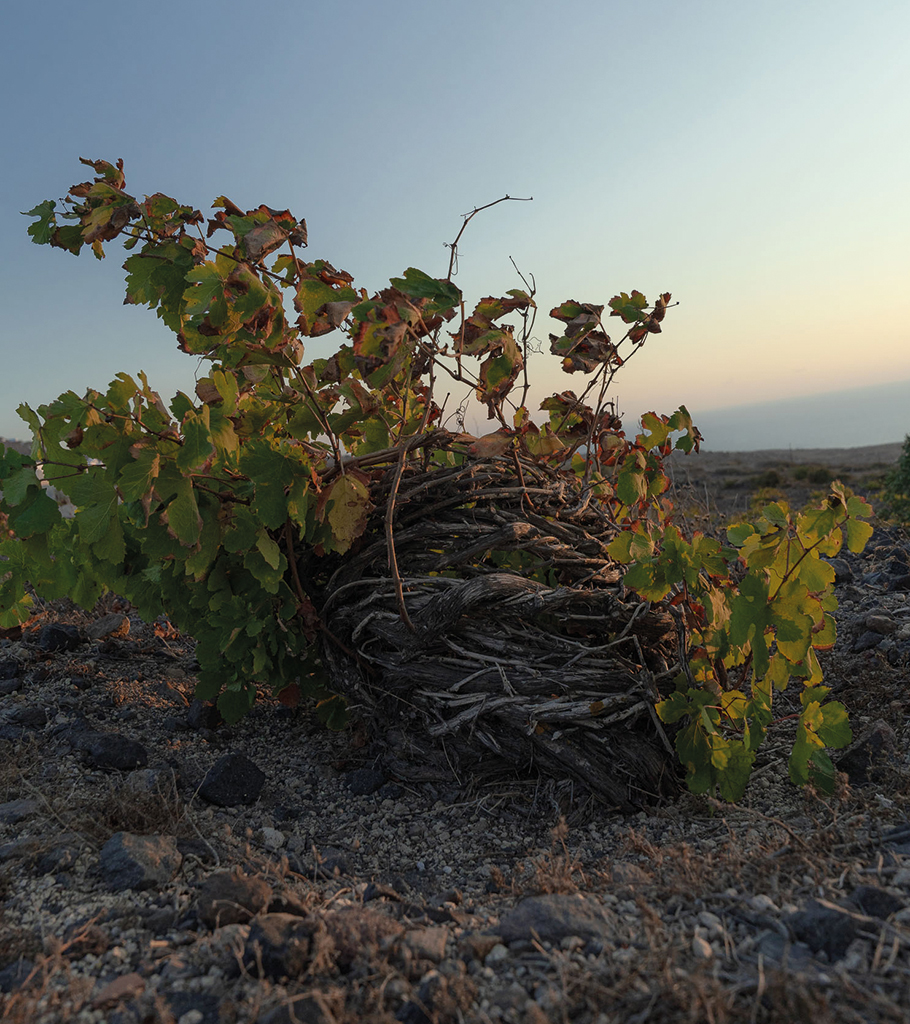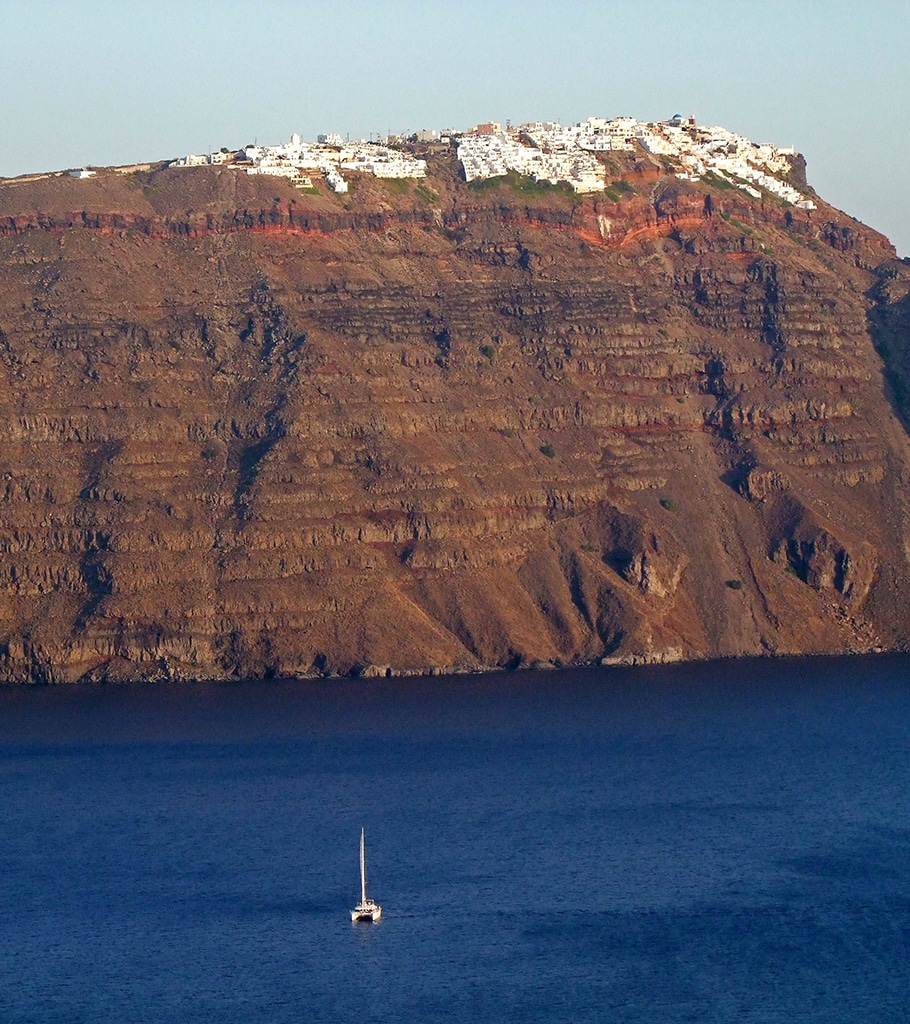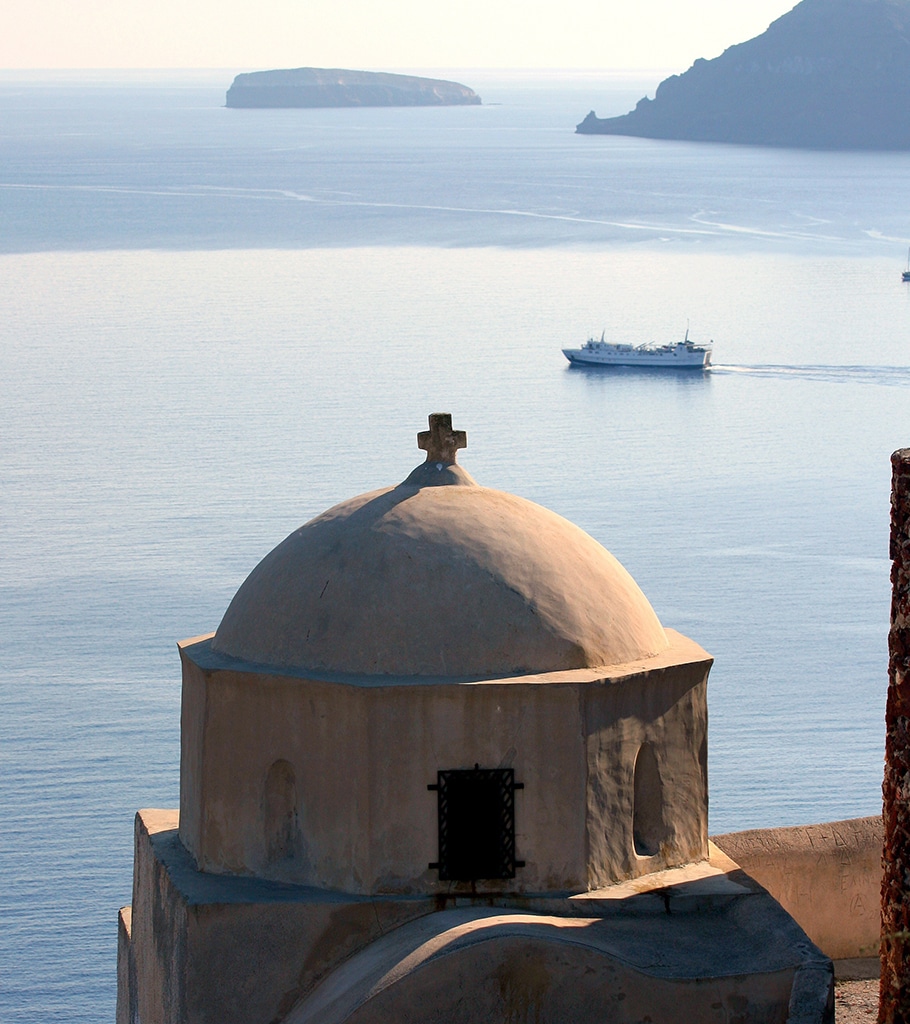
SANTORINI
The history of viticulture in Santorini has its roots in prehistoric times and it has left lasting traces on the island in its wake. According to professor Christos Doumas, director of the Akrotiri excavation, archaeological findings demonstrate that tending vines and making wine were an integral part of the lives of the island's early inhabitants. Charcoal from vine wood, grape seeds scattered among the ruins and decorative motifs of grape bunches on pottery reveal the vine's important role in daily life and rituals. Particularly jars with a spout and pseudostomous amphorae testify to the existence of the craft of winemaking and its possible links to commerce.
Despite the catastrophic volcanic eruption of the 17th century BC, which radically altered the island’s landscape, viticulture survived and evolved over time. Epigraphic relics proof the existence of swathes of vineyards varying in size from 180 to 300 stremma from the 8th century BC to Roman times. (One stremma is the Greek measure equivalent to 1000 m2 or 0.1 ha.) During the Byzantine period, Emperor Alexios I Komnenos gifted the church of Episkopi fields and vineyards, and the island’s long culture of grape growing continued.


Under Venetian rule from 1207 to 1566, Santorini became known for its wines to foreign travellers who remarked on the abundance of vineyards. Vinsanto, the island's renowned sun-dried wine, gained international recognition for its quality. In 1717, botanist Joseph Pitton de Tournefort published the first description of Santorini wine which “has the colour of Rhine wine, but is strong and full of spirits" whilst likening it to a liqueur and noting its connection to the sun-dried wines of Greek antiquity.
Even under Turkish occupation viticulture flourished. In 1741, a tax register listed 5937 stremma of vineyards on the island. Santorini’s wine was a vital export product that strengthened local enterprise and the shipping industry. During the Revolution of 1821, the people of Santorini contributed to the cause for independence by offering part of their wine production. In 1835, the conception of the Thiraikos Chamber of Commerce (of Santorini) underscored the mounting importance of wine for the island's economy.
Today, Santorini's vineyard, with over 3500 years of history, stands as a truly unique terroir shaped by its volcanic soil, arid and hot climate and indigenous grape varieties such as Assyrtiko, Aidani, and Mavrotragano.
The vines are still trained in the traditional ‘kouloura’ pruning method which forms each vine into a basket of foliage that shields the fruit from wind-blown abrasive sand and scorching sunlight. The plants are still self-rooted, deeply entrenched in the island’s soil. Rich in ash and pumice, the earth has always protected the vines against the deadly phylloxera pest. Its porous nature makes the soil capable of absorbing atmospheric moisture, particularly on hot foggy summer days, to mitigate infrequent rainfall, averaging just 350 mm annually.
Over centuries, Santorini’s grape growers have developed specific and rather emblematic cultivation techniques to ensure the survival of ancient grape varieties and the production of high-quality grapes in this harsh ecosystem.
With the establishment of the PDO (Protected Designation of Origin) Santorini wine appellation, which pertains to dry white wine and the famous Vinsanto production, and the recognition of the ‘Vine and Wine Heritage of Thira and Thirassia’ in Greece’s National Inventory of Intangible Cultural Heritage, Santorini continues to be a reference point on the world’s wine map. Here, nature and human dedication come together to craft wines that embody the island’s history and inimitable character.

